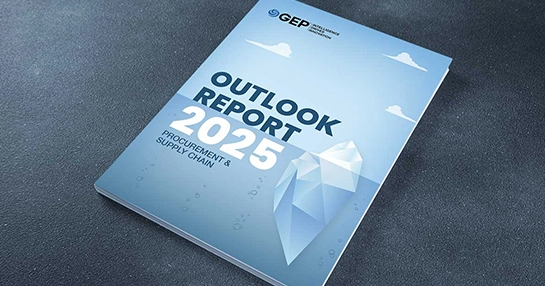
The AI Advantage: Transforming Mergers & Acquisitions
- AI significantly cuts the time required for M&A due diligence through automated document analysis and risk detection, enabling faster closure of deals with greater confidence.
- AI-enabled predictive analytics can now forecast acquisition target compatibility by analyzing thousands of data points across market trends, financials and company culture.
- Smart integration algorithms are cutting post-merger value destruction by identifying potential synergies and cultural clashes before they occur.
February 18, 2025 | M&A
Mergers and acquisitions (M&A) bring multi-faceted benefits in terms of financial, operational and strategic aspects. It goes way beyond cost savings and revenue growth. The opportunity to expand in newer markets and get access to wider technologies is where an M&A proves its worth.
But M&As are not without challenges. Enterprises need to make data-driven, informed decisions to get the most out of mergers and acquisitions for a successful synergy and extracting the maximum value. And that is precisely where artificial intelligence can augment the mergers and acquisitions process.
Integrating AI into the Mergers and Acquisitions Process
Changes across global business environments have led to complexities across the board, including deals. AI technologies are nonetheless reshaping how financial institutions, corporate development teams, and M&A advisors approach the entire deal lifecycle. This transformation is essentially altering the speed, accuracy, and depth of mergers and acquisition process — from target identification to post-merger integration.
Benefits of AI in Mergers and Acquisitions
The integration of AI in M&A processes represents a fundamental shift in how deals are identified, evaluated, and executed. While AI will not replace human judgment and expertise, it is becoming an indispensable tool for M&A professionals, enabling more informed decision-making and more efficient deal execution. Let’s take a look at some of the benefits.
Precision Due Diligence
Perhaps the most significant impact of AI in M&A can be observed in the due diligence process. Traditional due diligence typically requires teams of lawyers, accountants, and analysts to spend weeks or months reviewing thousands of documents. AI-powered tools are now capable of analyzing vast amounts of structured and unstructured data in a fraction of the time, significantly reducing both costs and human error.
Natural Language Processing (NLP) algorithms can now scan contracts, financial statements, and regulatory filings to identify potential risks, anomalies, and opportunities that might otherwise go unnoticed. These systems can flag inconsistencies in financial reporting, identify potential regulatory compliance issues, and even assess the sentiment in internal communications to gauge company culture and potential integration challenges.
Also Read: Why the Future of M&A Due Diligence Is AI-Powered
Enhanced Target Identification and Valuation
AI systems are transforming how acquiring companies identify potential targets. By analyzing vast datasets encompassing market trends, financial performance, patent portfolios, and competitive positioning, AI algorithms can identify promising acquisition targets that align with a company's strategic objectives. These systems can process information from multiple sources, including social media, news articles, and industry reports, to provide a 360-degree view of potential targets.
Furthermore, machine learning models can process multiple data sets and account for complex variables such as synergy potential, market dynamics, and risk factors — for nuanced data-driven valuations.
Streamlining Post-Merger Integration
The post-merger integration phase, typically considered a challenging aspect of M&A, is being transformed by AI-powered tools. These systems can analyze organizational structures, identify potential cultural conflicts, and suggest optimal integration strategies based on historical data from similar transactions.
AI algorithms can also assist in identifying redundancies and synergies across various business functions, from human resources to supply chain management. The tools can provide actionable insights for integration teams, helping them minimize disruption and maximize value creation.
Risk Assessment and Mitigation
AI's capability to process and analyze vast amounts of data has significantly enhanced risk assessment in M&A transactions. Machine learning algorithms can identify potential regulatory issues, litigation risks, and compliance concerns by analyzing historical data patterns and current regulatory frameworks. These systems can also monitor real-time market conditions and geopolitical events that can potentially impact deal success.
Furthermore, AI tools can assess cybersecurity risks by analyzing IT infrastructure, identifying potential vulnerabilities, and evaluating the target company's digital resilience.
Challenges and Limitations of M&A AI
Despite its transformative potential, data quality and accessibility remain significant concerns. AI systems require clean, structured data to function effectively, and many organizations struggle with data organization and standardization, limiting the effectiveness of AI tools.
Privacy and security concerns are also there — more so when it comes to sensitive corporate information. Organizations must ensure that AI systems comply with data protection regulations while maintaining the confidentiality of deal-related information.
There's still a need for human judgment in interpreting AI-generated insights. While AI can process vast amounts of data and identify patterns, experienced professionals are crucial for understanding context, managing stakeholder relationships, and making final strategic decisions.
Future Outlook
The future of AI in M&A appears promising, with several emerging trends likely to shape the industry.
Future Outlook 1: Predictive analytics capabilities in advanced AI systems will be able to better predict deal success rates and potential integration challenges based on historical data and market conditions.
Future Outlook 2: AI-powered platforms will continue to evolve, offering more sophisticated deal sourcing capabilities and automated preliminary screening of potential targets.
Future Outlook 3: AI tools will enable more precise tracking of post-merger value creation, allowing companies to adjust integration strategies in real-time.
Conclusion
The key to success with AI is in finding the right balance between AI capabilities and human expertise, ensuring that technology enhances the critical thinking and strategic decision-making process rather than simply replacing it.
The transformation of M&A through AI is not just about automation and efficiency; it's about enabling better decisions, reducing risks, and ultimately increasing the likelihood of successful transactions. The role of AI in mergers and acquisitions will grow more significant, making it essential for organizations to embrace and adapt while maintaining focus on strategic value creation.



